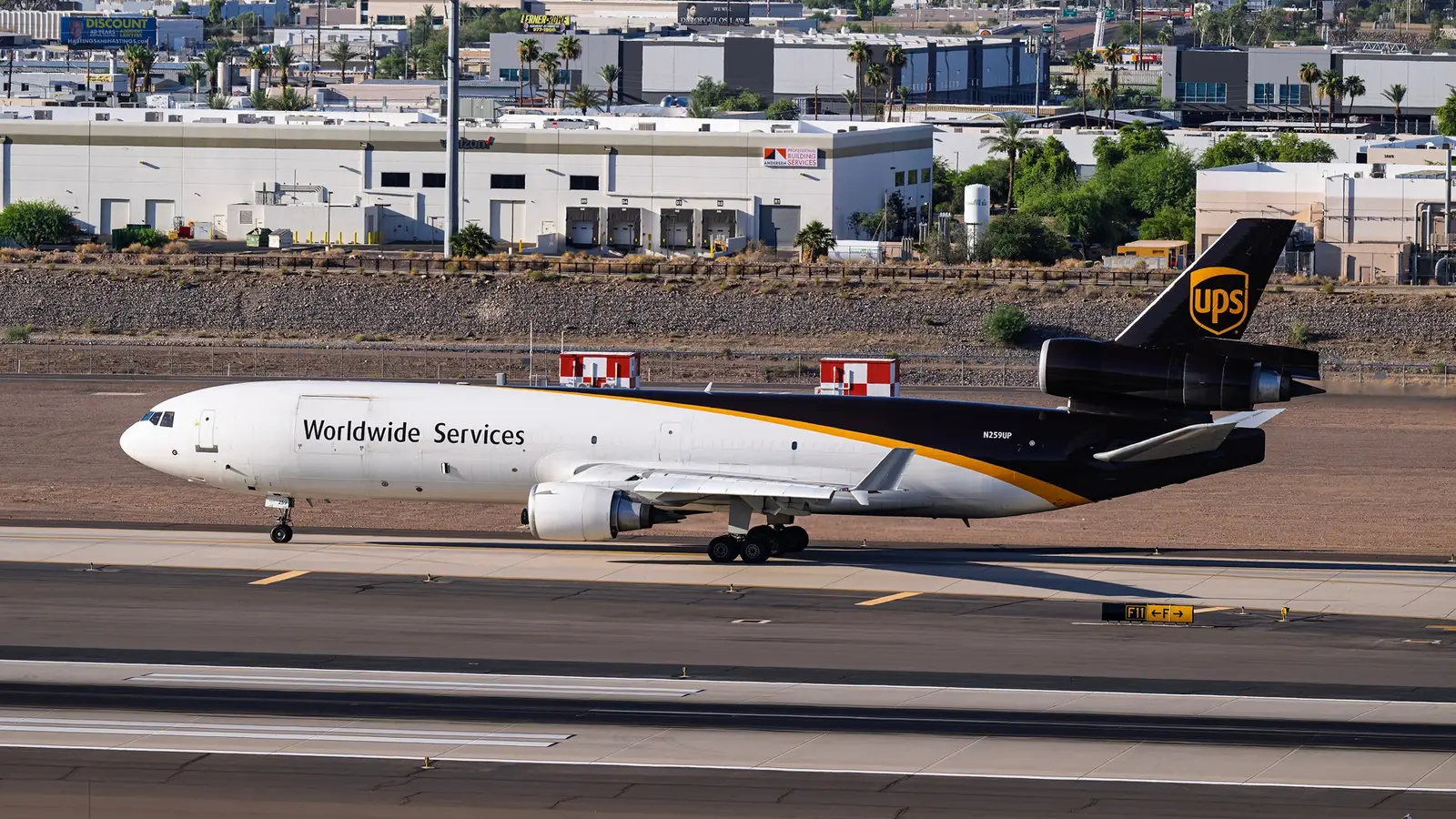Copyright Simple Flying

The investigation into the tragic crash of UPS Airlines Flight 2976 on Tuesday evening is focusing on the fiery history of the CF6 turbofan engine equipped on the ill-fated freighter jet. The McDonnell Douglas MD-11F that went down just after takeoff from Louisville Muhammad Ali International Airport (SDF) was powered by three of the General Electric jet engines. The National Transportation Safety Bureau (NTSB) investigation revealed that four other aircraft have experienced uncontained failures with the GE CF6 turbine just at O’Hare International Airport (ORD), according to NBC 5 Chicago News. Today, the CF6 is the most popular turbofan engine for commercial aircraft. Almost 70% of the worldwide freighter jet fleet uses some variant of the CF6 lineup. The CF6 Engine Safety Record GE’s CF6 is the longest-running and most widely used commercial jet engine in the world since it was introduced in 1971. GE has delivered more than 8,500 engines tailored to 10 different commercial and military jets, along with 25 different variants. As one of the most mature and popular products in GE’s turbine family, the CF6 does have a very strong track record for reliability and safety. Despite that fact, several similar incidents have occurred over the years. In 2000, a Varig Airlines Boeing 767 aborted takeoff in Lima, Peru, when its engine burst into a fireball on the runway, as the Aviation Safety Network records. The NTSB files record that an American Airlines (AA) 767 experienced an uncontained CF6 failure in 2006 and again in 2016. The 2016 incident was attributed to a production defect. In 2021, another GE CF6 exploded during the takeoff roll of a flight by a Transcarga Airways Airbus A300. One engine maintainer who posted on the Aviation Herald, who goes by Lee, made these remarks regarding the potential cause of the engine failure: “CF6 Tech here, it is highly unlikely that a modern turbine engine would separate from an aircraft like this on its own. Last time this happened was in 1993. Yes there are mechanical fuses at the engine is on fire, but that takes a good 5 minutes to melt the metal. That others are discussing recent engine removal work on this hull, is chilling. I pray they did not use a forklift for the installation of the engine, onwing. Any tech who even touched the engine right now is crapping their pants. it's not a fun time at all and some will need time off, until a prelim report comes out. The stress is real.” Is Improper Maintenance To Blame? Commercial airliners are designed with fuse pins in the engine pylons that will allow for extreme, abnormal forces to shear the engine off the wing. Those fuse pins are designed to allow the engine to fall away cleanly and prevent further damage to the rest of the aircraft, including fuel tanks or the fuselage. If those were damaged in the course of routine maintenance, they may have failed during the takeoff roll of Flight 2976. The UPS MD-11F underwent a maintenance overhaul from September 3 to October 18 and the NTSB is pulling all available records of the repairs to analyze in the search for the cause of the plane’s catastrophic crash. In video evidence, the left engine appeared to separate from the wing at the same time that the plane rotated for liftoff. It landed on the side of the runway while the jet briefly went airborne before crashing back down in the business park beside the airport. When American Flight 191 crashed under virtually identical circumstances to the mishap on Tuesday, it was found that technicians used a forklift to handle the engine and pylon as a single unit. That was contrary to the GE recommendation, and the improper use of equipment had caused damage and stress fractures to the pylon structure. Flight 191’s engine separated from the wing on takeoff, and the jet rolled to an inverted orientation before it crashed. It remains the deadliest mishap in US commercial aviation, claiming 271 lives. The crash of UPS Flight 2976 is being directly compared with AA 191 from the similarities shown in the video and photographic evidence. Only when the preliminary report is released by the NTSB will more clarity into the exact nature of the tragic crash be granted. A Young Mother Still Missing Two employees of Grade A Auto Parts in scrap metal recycling are missing as of now. Megan Washburn, 35, is a mother of two who is working as a scrap metal buyer and customer experience agent on the day of the crash, according to NBC News. The company's owner, Sean Garber, also told NBC that John Loucks, 52, who works as a heavy equipment operator, is also missing Families of Washburn and Loucks have submitted DNA samples to investigators to aid in the search. So far, the rescue and recovery efforts have resulted in the discovery of 13 fatal casualties, including all three crew members of the aircraft. The governor of Kentucky also stated to the public that a young child is believed to be among the dead.



